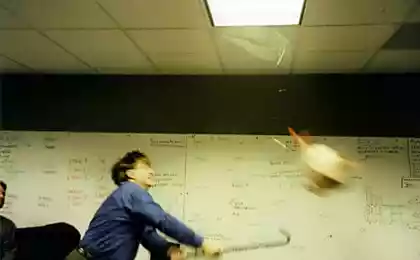2115
What you need to know to draw well?

David roar - a wonderful artist who works with free software, the permanent members of the community Krita Foundation and Blender Institute, concept artist animation projects Gooseberry Open Movie Project, Mango Open Movie Project (Tears of Steel) and Durian Open Movie Project (Sintel). In this article he shares with emerging artists list of knowledge that must be purchased in order to get realistic work. He notes that the drawing "in the figure" should acquire the same skills as in the traditional technique. So, to attach to his experience.
"It's hard to choose what to study for those who want to do the drawing ... I get a lot of emails on this subject; Beginners usually feel lost, lost in all this. So I decided to make a kind of table of contents - a list of what we need to learn and practice what is necessary to create quality work and learn how to draw better. Each item is supplied with my simple comment to answer the question "what", "why", "how". Thus it will be easier to find the necessary material using your favorite search engine. Also, this material may be useful for those who wish to improve the quality of their work. I will use these starting points in their exercise and finding errors in his work. If you are just starting to draw - here's my advice: be scholars, learn the basics and focus on individual elements in turn.
1. Perspective h4> What is it: Arts transmit three-dimensional space on a flat surface.
What is the purpose: Do not draw flat, depict depth on a two-dimensional paper.
What you need to know about it: Perspective Grid as simple shapes (cubes, spheres, and so on. ... N) behave in the future and how to maintain the aspect ratio.

The work is based on two vanishing points (green and red) i>
2. Proportions h4> What is it: The ratio of the size of all the objects in your drawing.
What is the purpose: draw recognizable objects, due to stereotypical notions of proportions.
What you need to know about it: Learn to memorize the proportions, find a way to easily remember the ratio of parts of an object, make a "dictionary" proportions.

The orange line shows the basic proportions and ratios in the picture (left) and sketch (right) i>
3. Anatomy h4> What is it: The study of the structure.
What is the purpose: Draw realistic objects (people, animals, plants, equipment, and so on. Etc. ...).
What you need to know about it: Joints, bones, muscles, how they work, how they behave, how to connect parts, and so on. N ...

Exercise on drawing hands (left), drawing on the skeleton (center), the study of muscle (right) i>
4. Composition h4> What is it: Location and supply the visual elements of drawing.
What is the purpose: Send the viewer feelings and emotions through drawing.
What you need to know about it: Deal with a set of angles and understand how they affect the perception and "readability" of the work.

Various sketches before starting work; Music Search i>
5. Lighting h4> What is it: Light and shadow transmitted in color.
What is the purpose: to create the illusion of light, display the correct shade to achieve volume and convey the mood.
What you need to know about it: The color values, shadow casting, the influence of surface materials, the light reflection characteristics of light (refraction, scattering materials, and so on. Etc. ...).

Left: The light shows the difference in the material, right: the use of light to show the second character (drop shadow) i>
6. Edge h4> What is it: method to allocate silhouettes of objects in your drawing.
What is the purpose: To facilitate the reading of the work, share the objects and background, to enhance the effect of depth.
What you need to know about it: Style edges (clear / soft / disappearing) in drawing, line styles (weight, speed, softness) for contours.

Left and center: the edge of the figure to the right: the thickness contours i>
7. Colors h4> What is it: The art of choosing the right colors (midtones, shadows, light).
What is the purpose: Add more movement, mood and emotions of your work.
What you need to know about it: Color System (monochromatic, complementary, and so on. ... N), particularly the impact of color on mood, stereotypes.

From top left: 3 color range, reflecting the palette for this work; three additional colors i>
8. Poses h4> What is it: The art of motion capture to a static page.
What is the purpose: Add life, energy, movement and dynamics.
What you need to know about it: Emotional strokes, sketches, drawings fast, the study of all the moving, part of the "warm-up" exercise.

Left: penguin poses at the zoo, in the middle: the study poses the motion, right: warm-up sketches of figures i>
9. Style h4> What is it: Aesthetics, sense of style. Often depends on the fundamental standards (ethical, historical, social, symbolic), art cultural groups, art-market.
What is the purpose: Get a way to work the audience.
What you need to know about it: your own taste, culture, the creative team as both creators and the public.

Left: classic black-and-white portrait, center: highly stylized (and strange) character and drawing style, right: my comic style i>
10. The idea h4> What is it: Drawing abstract concepts, ideological associations, and the invention to provide a new design. This is mostly the development process.
What is the purpose: Suggest new images of objects, characters and creatures to entertain or inform the public.
What you need to know about it: How things work, how to create a new association of ideas, funny situations, the creative process.

A new type of technology (left), a new kind of dragon (center) and the medieval house that has not been seen before drawing (right) i>
11. Communications h4> What is it: The image can convey a large amount of complex information quickly. Adage "A picture is worth a thousand words" is well explained.
What is the purpose: An artist can communicate (internationally or not) with the audience.
What you need to know about it: Reading images (decryption of messages sent, nonverbal signs), the transfer of meaning, history and information.

Figure sheet does not carry specific information (left), but the complex details and facial expression can already tell a story (in the center). This symbol is the bar from newspapers (right) can make deeper thinking about the problem of unethical journalism i>
Conclusion: The significant illusion h4> If you are able to properly combine all of the above, the dobёtes sense of volume, depth, texture, light, movement and life on a static surface. It will immerse your audience into your world, and you can easily transfer them to your ideas, messages or tell a story. And finally, as I see the result: art to create the illusion of meaningful knowledge, observation, imagination , but first of all you need to practice, practice and practice Build your unique experience ».
Source: habrahabr.ru/company/krita/blog/246785/
Unbelievable chemical processes captured 4K camera
The first photo of the sun from space observatory NuSTAR


































